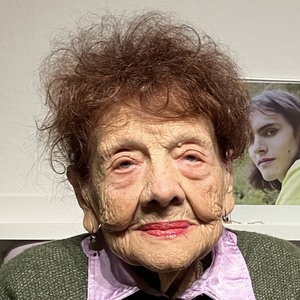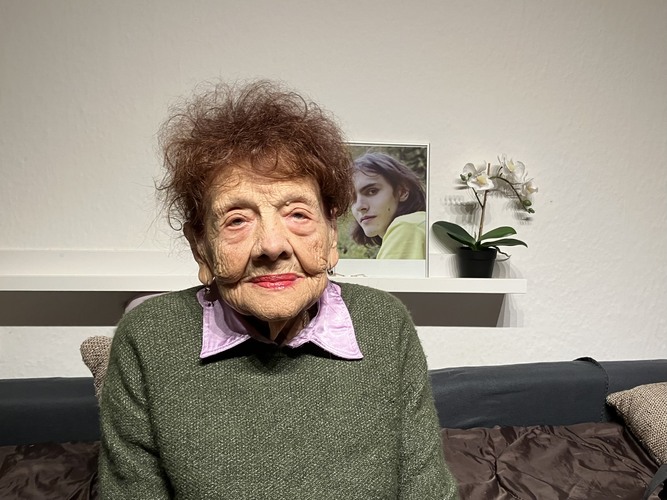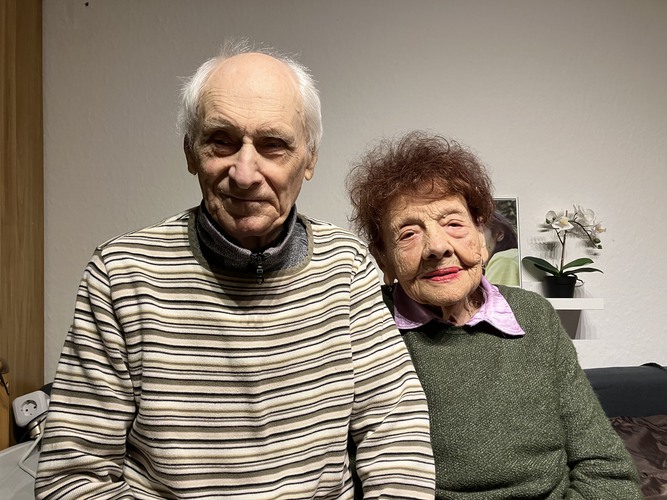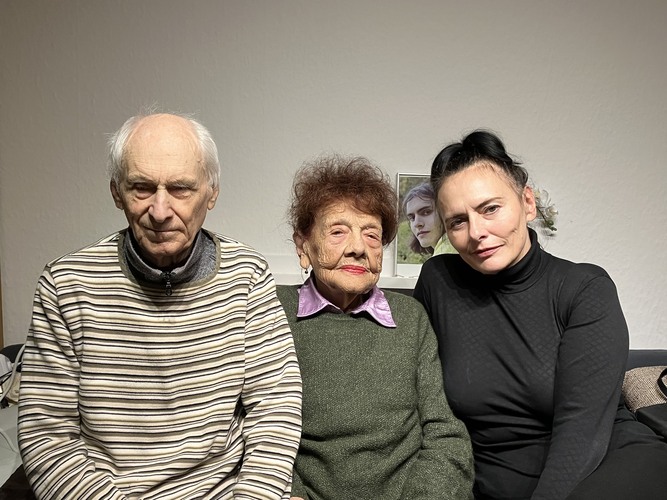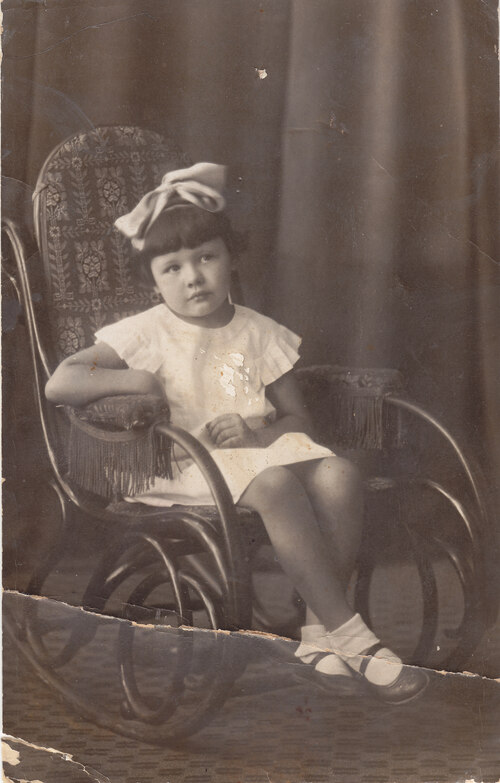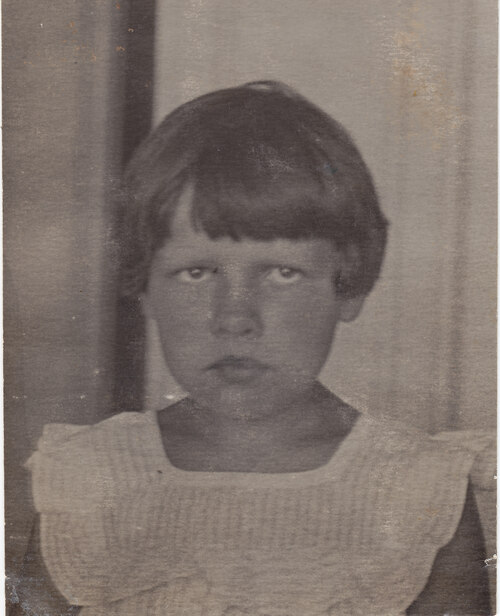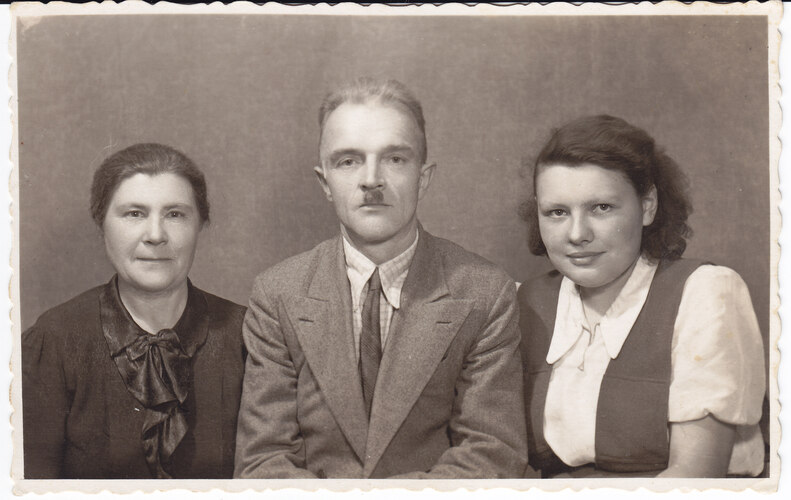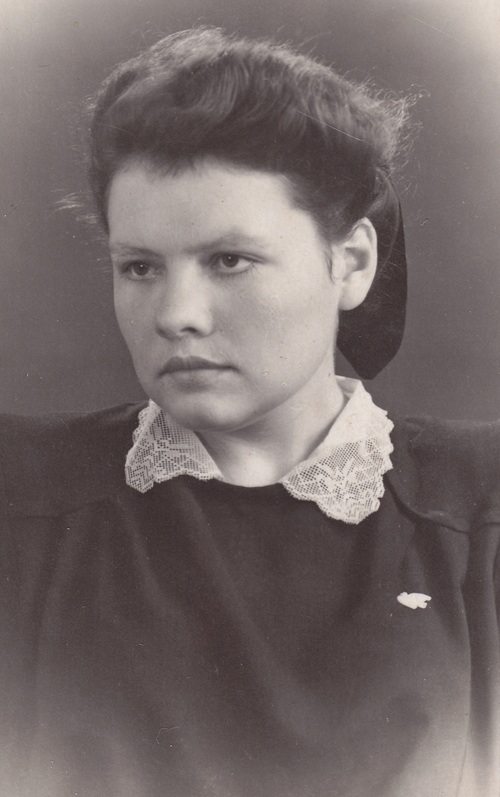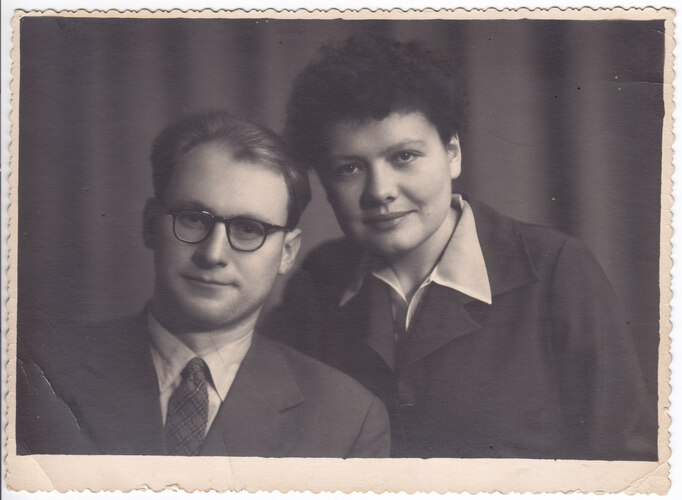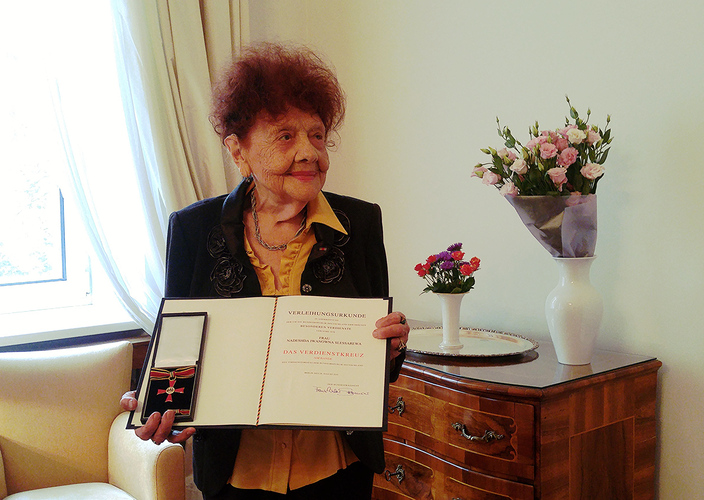Nadia Ivanivna Slesareva (née Viktorovskaya) was born on September 23, 1930, in the city of Dnipropetrovsk (Dnipro). Her father was an agronomist and her mother a primary school teacher. A girl named Motya also lived with the family: Nadia’s father had brought her home with him from a village during the Holodomor, and she was brought up like a daughter in the family. Nadia describes her early childhood as very happy. This all changed in the summer of 1937, when Nadia’s father was arrested after being appointed assistant to the People’s Commissar of Agriculture. Only in 1957 did his fate become known – he was shot as an “Enemy of the People” in September 1937.
Following her father’s arrest, Nadia and her mother were evicted from their apartment, and Motya returned to her village on foot. In September 1937, Nadia’s mother was also arrested, and the girl was sent to an orphanage for children of “Enemies of the People”. Such state-run orphanages did not just exist to provide a social service; they were also tasked with preventing the spread of counterrevolutionary ideas in society. Nadia remembers her time in this institution as very scary, and that the staff enacted brutal corporal punishment on the children being held there. All of Nadia’s relatives turned away from the family, with the exception of her aunt Lena and her uncle Marcel. This couple decided to rescue Nadia from the orphanage and adopted her.
On June 22, 1941, Nazi Germany attacked the Soviet Union. Nadia and her adoptive mother were unable to leave, as the station from which they wanted to depart from was bombed. On September 25, 1941, German troops invaded Dnipropetrovsk. The German occupation was brutal, and the city’s residents lived under very difficult conditions. Nadia witnessed atrocities being committed against the city’s Jewish population. She describes seeing Jewish civilians being herded towards anti-tank trenches to be shot.
Since Nadia’s adoptive father was Polish, their family was sent to the Stutthof concentration camp. Here, they all lived together in one barrack. From Stutthof they were deported to Berlin. As their train pulled up to the Alexanderplatz station, the city experienced a bombing raid that lasted all night. During the bombing, they were locked in the cars and were forbidden to take cover. Miraculously, the family survived.
In 1944, Nadia and her family were taken to a labour camp in Stettin, located on the grounds of a tile factory. Although the conditions in the camp were horrendous, Nadia fondly remembers the factory’s owner, Walter Kück. She recalls that he tried to make life easier for the young inmates of the camp: under the pretext of requiring domestic servants, he let Nadia and her friend go to the port to collect leftover fish in buckets, which they then brought to the camp. Near the end of the war, the forced labourers at the factory were transferred to Neubrandenburg. Nadia and her adoptive parents lived with a peasant, where they were assigned the task of moving huge stones located on his plot of land. It was there that Nadia experienced the end of the war.
When the war was over, Nadia and her adoptive parents left for Poland. In 1948, they received a letter from Nadia’s birth mother. Due to her ill health, she was permitted to leave the camp earlier, which saved her life. Upon reading this letter, Nadia immediately decided to return to the Soviet Union to be with her mother. She graduated from school and entered the Dnipropetrovsk Institute of Civil Engineering. Despite the fact that most career paths were closed to people who were forced labourers in Germany, Nadia was lucky to have people who supported and helped her. After graduation, she went to work on the rebuilding of Donbas – a difficult but necessary project to restore the war-torn cities of Ukraine.
In 1963, Nadia completed her postgraduate studies at the Kyiv Civil Engineering Institute. There she met her husband Alexander Slesarev. They had two daughters together – Lyudmila and Elena. Further, in her career, Nadia designed roads and buildings in Kyiv, and published approximately 150 academic papers and articles. Following her retirement, Nadia devoted all her time to preserving the memory of the forgotten victims of Nazism - forced labourers. She has worked closely with the Ukrainian organisation “Union of Prisoners — Victims of Nazism”, and was the founder of the women’s centre “Nadia” in 2017.
Her personal life did not remain free from tragedy. In 2015, her grandson, Sasha, died of a serious illness in Germany, not far from Stuttgart, where he was brought for treatment. The family struggled to recover from this loss.
In December 2021, Nadia’s second grandson Christian was born. Just a couple of months following his birth, in February 2022, Russia attacked Ukraine. It was at this point, that the family made the difficult decision to flee Kyiv. Nadia’s family first reached Poland. In the end, they decided to go to Germany, to Geislingen an der Steige near Stuttgart. The family have been happily living there since April 2022. They also associate this city with the final days of Nadia’s grandson Sasha – his grave is located there.
In June 2022, Nadia had an unfortunate fall and broke her femoral neck. After the injury, she faced a long recovery time. Now Nadia returned to an active life. She corresponds with journalists and eagerly meets with the public to continue telling the story of her life.
Written by Daniel (Hannover), Koen (Maastricht), SangHoon (Seoul)
